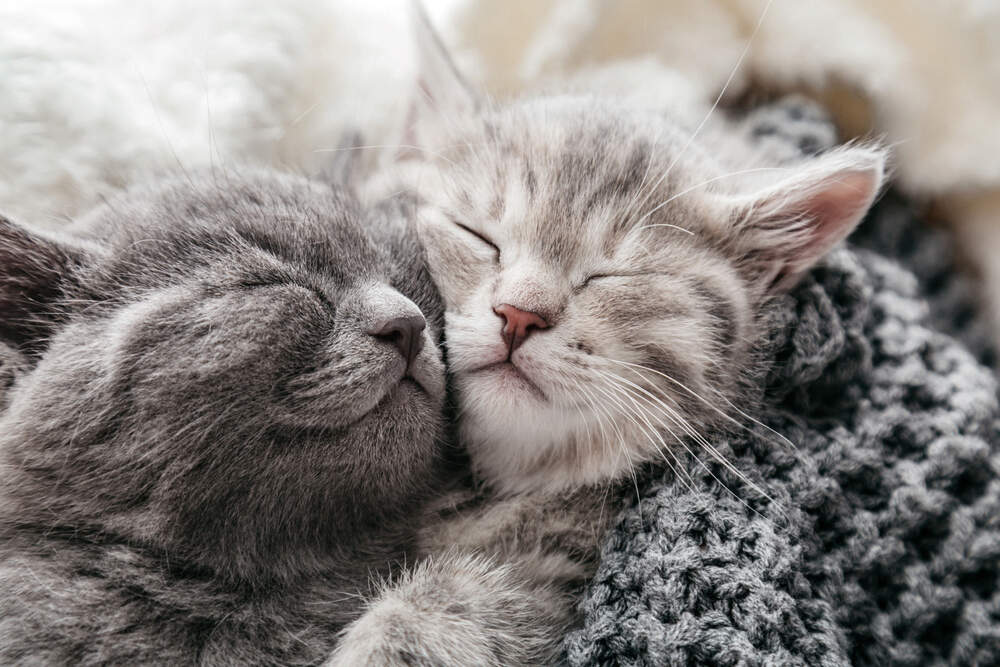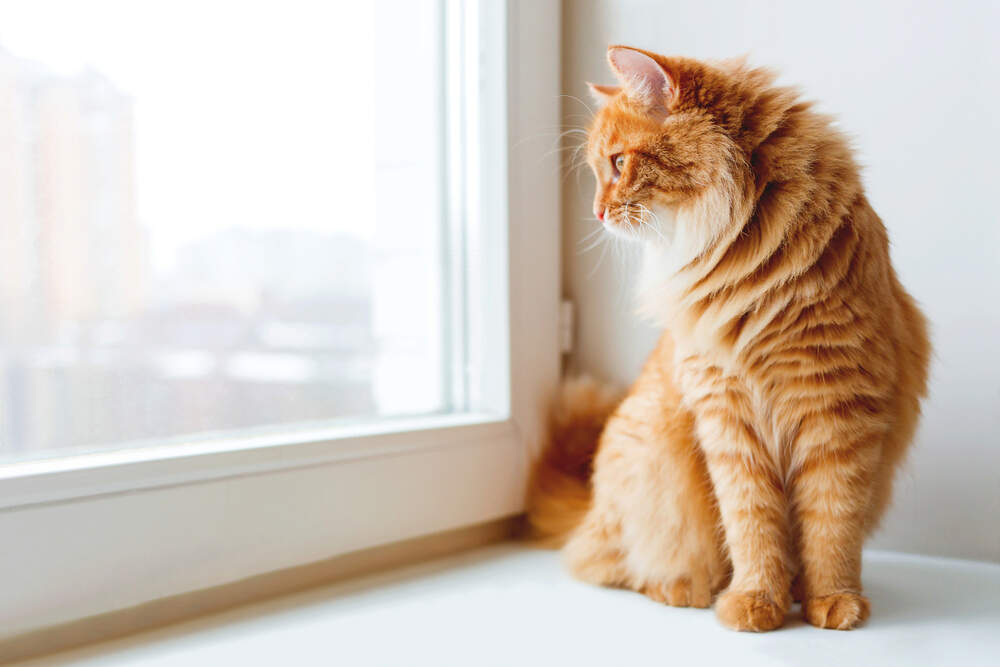How Do I Introduce My New Kitten to My Cat?
Adopting a new kitten is a special moment for any household. But if you have other cats in your home, you might also feel a little nervous. How do you introduce your new kitten to your older cat, so they get along? Will the established cat be jealous about sharing your attention now that he has a new baby brother or sister? What are the warning signs you should watch out for when introducing cats to kittens? The key to maintaining peace is to introduce your two pets slowly. Your cat will be more likely to accept your new kitten if you give them a chance to get to know each other on slow and steady terms.
Understand that Introductions Will Likely Take Time
Bringing a new kitten home to another cat is a slow process. Unlike dogs, you can't first take cats on play dates. You probably don't take your cat on walks and socialize him with other cats, so it's tough to guess how he'll treat your new kitten. Cats are almost always cautious and unfriendly when they first meet another feline, but it doesn't mean they hate each other. A cat might hiss at a beloved littermate that just came home from the vet simply because he smells different. Even cats that are friendly with people they've never met might be skittish around a new cat. It's important to have realistic expectations; even the friendliest cat will need a slow introduction to your new kitten.
Get Your Home Ready for the Big Meetup
Don't just bring your kitten home, open the carrier, and set her free in your house. Get your home ready for the big introduction. If you can get a blanket that your kitten has slept on, bring it home first and keep it near your cat's bed. It will help him get accustomed to your kitten's scent.
Set up a room where you can keep your kitten safe and separate from your cat at first.1 You want to "kitten proof" this room and your entire home; cover any electrical cords, remove breakables, and lock up anything your kitten might chew on or eat that could hurt her. You also want to set up cat trees and other "high spaces" in your home since cats get along better if they have high locations to retreat to.
A small bedroom, bathroom, or office is a perfect place to keep your kitten comfy and happy while she's separated from your older cat. Include a litter box, food and water bowls, a comfy bed, and toys. Kittens especially love little crinkle toys and small mouse toys with catnip inside. Ideally, her room will have a window (maybe even with a window perch), so she can watch the world outside and any birds that fly by.
Set Up Comfort Zone Products in Your Home
Another key part in getting your cats ready to meet is to set up Comfort Zone products in your home. Your cat's e-meow-tional health is just as important as his physical health, and an emotionally healthy cat is more likely to get along with a new arrival. Comfort Zone products are dedicated to helping cats feel safe, happy, and calm using signals they understand.
Use the Comfort Zone Multi-Cat Diffuser, which can help reduce stress levels in a home with multiple cats. Plug the diffuser in the rooms where your cat spends the most time and in your kitten's "safe room." Be sure to do this before you bring your kitten home since it can take a few days for the soothing vapors to really permeate a home. (Don't worry, the diffusers can still help if you already brought your kitten home.)
You can also give your established cat a Comfort Zone Calming Collar to wear, so he has those calming signals with him wherever he goes.
Keep Them Separated at First
For the first few days or weeks, keep your kitten and cat separated. It's okay if you want to let your older cat sniff your kitten through the carrier before bringing your kitten to her "safe room." But in general, it's best to let them get used to each other's scents and sounds in a safe, controlled environment where they each have their own space.
Feed them on opposite sides of a closed door at the same time and see how they react to each other's presence. Once they're calm, use a screen to separate them so they can see each other while they eat. Watch for any signs of stress, like growling, hissing, a puffy tail, body posture close to the ground, or ears held flat.
It might also be helpful to "switch rooms" from time to time, so they don't feel too territorial about their spaces. At the very least, switch some bedding around, so they're exposed to each other's scents.
Once they're both calmly eating on opposite sides of a screen, you can graduate to giving them short, supervised visits together. If you notice one cat getting stressed about the other, distract the stressed cat with a feather wand toy or a treat.
Remember that sometimes, if your kitten pushes a boundary, your older cat might hiss a little or even give a gentle swat.2 Don't be alarmed; it's just a cat's natural way of setting boundaries. Still, you want to pay attention to their interactions to ensure it's a gentle reminder and not a tense encounter that escalates into a fight. Once your cat and kitten get along better, they might even "play fight" from to time.
Even if they're getting along fine, give them treats to solidify positive associations. Slowly increase their time together until they're no longer kept separate. Some pet owners might prefer not to leave the adult cat alone with the kitten unsupervised until their kitten is older.
Keep Your Cat's Schedule Consistent
Another key to helping your cats get along is to keep a consistent schedule. Switch from free-feeding to scheduled feedings before you bring your kitten home. Then maintain that schedule once your kitten arrives. Cats tend to get along better when they're in a scheduled feeding environment, so their energy levels are synced more closely.
Set up consistent traditions and playtimes with your first cat and maintain those once your kitten arrives. Consider including a time when you play with a feather wand or put a harness on your kitty and take him to the backyard for a stroll. Maintain your bonding times to keep his confidence high, and start traditions with your new kitten too.
Patience is the key to successfully teaching your cat and kitten to get along. Don't push them to integrate faster than they're ready. Give them both a lot of love and a lot of time, and you'll have the purrfect household for your beloved kitties.
1. Feinn, Lily. "How to Introduce Your New Kitten to an Older Cat." The Dodo, 27 July 2017, https://www.thedodo.com/close-to-home/how-introduce-kitten-to-cat.
2. Kruzer, Adrienne. "How to Train Your Older Cat to Accept a Kitten." The Spruce Pets, 2 January 2020, https://www.thesprucepets.com/help-older-cat-accept-kitten-554827.




